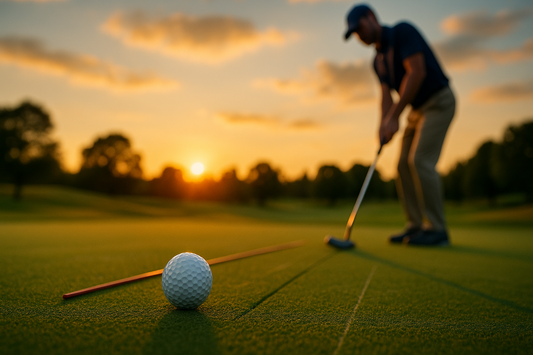After sixteen years as a PGA Professional, I've watched thousands of golfers waste countless hours at the practice facility. They show up, grab a bucket of balls, and start whacking away with their driver. Thirty minutes later, they're frustrated, tired, and no better than when they arrived.
Here's the thing that might shock you: most golfers practice completely backwards. They spend 80% of their time on the shots they hit 20% of the time during a round. Meanwhile, the short game and putting—which account for roughly 65% of your total strokes—get maybe ten minutes of attention at the end when they're already mentally fried.
Let me share what I've learned from coaching tour players, scratch golfers, and weekend warriors alike. The difference between improvement and stagnation isn't how long you practice or how many balls you hit. It's about having a systematic approach that builds skills progressively and keeps you engaged from start to finish.
The Foundation: Your Pre-Practice Ritual

Every great practice session starts before you even touch a club. I always tell my students to spend the first five minutes doing what I call the "mental download." What specific part of your game needs work? What happened during your last round that frustrated you? Write it down if you have to.
This isn't just feel-good psychology, this is practical preparation. When you have a clear target for improvement, every swing has purpose. Instead of mindlessly beating balls, you're conducting focused experiments that lead to real breakthroughs.
The Warm-Up That Actually Works

Most golfers think warming up means taking a few practice swings and then immediately grabbing their driver. That's like trying to sprint before you can walk. Your body and your swing need time to find their rhythm.
Start with wedge shots to targets no more than 50 yards away. Focus on clean contact and consistent tempo. I usually have my students hit about fifteen shots, gradually increasing the swing length from half-swings to three-quarter swings. This gets your body moving properly and builds confidence before you move to longer clubs.
Here's something I learned from working with tour players: they never hit a shot without a specific target and a clear intention. Even during warm-up, every ball has a purpose. Adopt this mindset, and your practice immediately becomes more effective.
Six Actionable Practice Principles

- Always practice with alignment aids. I don't care if you've been playing for twenty years—use alignment sticks or clubs on the ground. Even tour players do this religiously because it's impossible to improve if you're not aimed correctly.
- Follow the 60-30-10 rule. Spend 60% of your time on short game and putting, 30% on iron play, and only 10% on driver. This mirrors the actual distribution of shots in a typical round and will drop your scores faster than anything else.
- Create pressure situations during practice. Hit five balls to the same target and demand that at least three hit their mark. This simulates on-course pressure and makes your practice more game-like.
- Track your progress with specific metrics. Instead of just hitting balls, measure things like how many putts you make from six feet, or how many wedge shots land within ten feet of your target. Numbers don't lie, and they'll keep you motivated.
- End every session with success. Always finish with something you do well, whether it's making three putts in a row or hitting a few smooth 7-irons. You want to leave the practice area feeling confident, not frustrated.
- Vary your practice environment. Don't always hit from perfect lies on flat ground. Practice from slopes, divots, and different lies. The course won't give you perfect conditions, so your practice shouldn't either.
Two Step-by-Step Alignment Drills
The Railroad Track Drill: Place two alignment sticks on the ground parallel to each other, about shoulder-width apart. The stick closest to you represents your foot line, while the far stick represents your target line. Practice setting up so your feet, hips, and shoulders are parallel to the near stick while your clubface aims along the far stick. Hit ten balls focusing solely on this setup, then remove the sticks and see if you can maintain the same alignment.
The Gate Drill: Set up two tees or small objects about six inches apart, creating a "gate" about three feet in front of your ball on your target line. Practice hitting shots that pass through this gate. Start with short irons and gradually work up to longer clubs. This drill forces you to start the ball on your intended line and builds incredible precision over time.
Here are some additional structured putting drills to maximize your practice sessions.
The Progression That Creates Lasting Change
Real improvement happens when you build skills systematically. Start each session with fundamentals—grip, stance, alignment. Then move to technique work with shorter clubs before progressing to longer ones. Always finish with some form of scoring practice, whether it's putting games or short-game challenges.
Remember, the goal isn't to hit perfect shots during practice. It's to build the skills and confidence that show up when you're standing over a crucial putt or trying to hit a green in regulation. Structure your sessions with intention, stay focused on specific improvements, and watch your scores drop faster than you ever thought possible.





